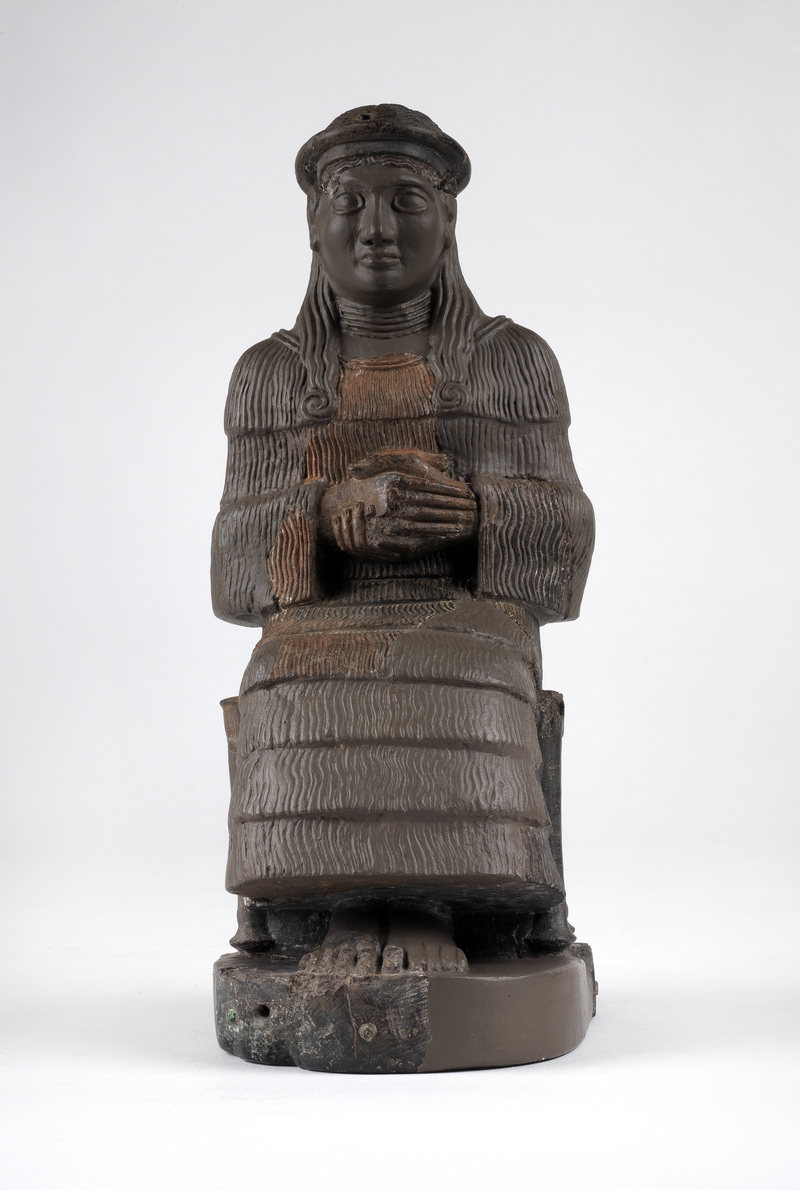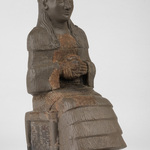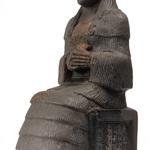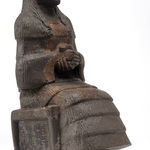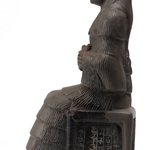Human Statuette
B16229
Location: On Display in the Middle East Galleries
From: Iraq | Ur
Curatorial Section: Near Eastern
| Object Number | B16229 |
| Current Location | Middle East Galleries - On Display |
| Provenience | Iraq | Ur |
| Archaeology Area | From Gipar-ku, Room C.22. |
| Period | Early Old Babylonian Period |
| Date Made | 1953-1935 BCE |
| Section | Near Eastern |
| Materials | Diorite |
| Iconography | Priestess | Enanatumma | Ningal |
| Inscription Language | Sumerian Language |
| Description | Statue of priestess Enanatumma dedicating her statue to the goddess Ningal. Heavily reconstructed. CBS Register: diorite statue of the goddess Ningal. Part of the base, skirt, elbows, right shoulder, lower part of head are restored. Inscript. of Eaannatum. UE VII: Diorite statuette of Ningal, fragments of.The goddess is seated on a chair, wears a flounced and pleated garment reaching from the neck to the feet; her hands are clasped below her breast, her feet are bare. The head is missing, as are both shoulders and upper arms, the whole of the left leg and the drapery from the right knee to the skirt, and most of the left foot. The workmanship of the drapery is careful but lifeless, that of the hands and feet very much finer. The panels of the chair are solid and covered with a long inscription by En-ana-tuma, daughter of Isme-Dagan, dedicating the statue of Ningal. U.E.T. I, No. 103; C. Zervos, L'art de la Mesopotamie (Paris, 1935), P1. 114 (where the figure is wrongly classified under En-ana-tuma of Lagash and wrongly assigned to the British Museum); H. Frankfort, Art and Architecture of the Ancient Orient (London, 1954), pp. 55-6, P1. 57 (where the statue is reproduced in restored form). Statuette of a seated lady wearing a flounced garment and with her hands clasped together at her midriff. The panels of her chair are covered with an inscription in cuneiform. The statuette was found badly broken in the temple of Ningal at Ur. It has been heavily restored, with the missing head and parts of the body replaced, based on similar statues. Originally thought to be a depiction of the goddess Ningal, original parts of the headdress were found and they are not the headdress of a goddess, but of a priestess. The inscription on the chair shows that the statuette was dedicated to Ningal by Enannatuma, high priestess at Ur and daughter of King Ishme-Dagan. Since the headdress represents a priestess, the statue is likely meant to represent Enannatuma herself, a powerful woman at Ur who also ordered a rebuilding of the Ningal temple. |
| Credit Line | British Museum/University Museum Expedition to Ur, Iraq, 1926 |
| Other Number | U.6352 - Field No SF | 431 - Cast Number | P270014 - CDLI Number |
Report problems and issues to digitalmedia@pennmuseum.org.


